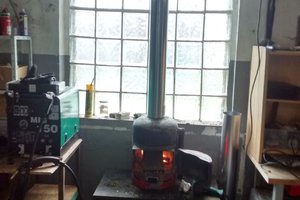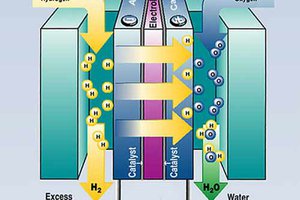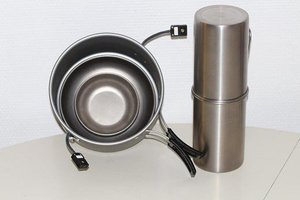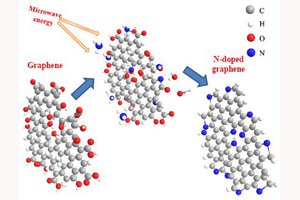The other day I was browsing around in Home Depot looking for something or other and bumped into a shelf full of framing nailers, power tools used to nail 2x4's and the like together. They come in various types and grades, but one caught my eye -- a cordless model from Paslode. It drew my interest because I know from experience about driving good-sized nails all the way into studs and joists. Doing it over and over is a lot of work. Since I could see the nailer didn't have a battery big enough to supply the needed energy, I wondered how it could work. A little in-store investigation quickly turned up the answer: it runs on fuel delivered from something the manufacturer calls a "Paslode fuel cell." This small metal cylinder holds enough energy to drive 1000+ nails! The boxes for replacement fuel cells feature enticing warnings like, "DANGER extremely flammable" and "compressed flammable liquefied gas." Energy density. How interesting.
Having built a number of spud guns and their cousins over the years, I know that the biggest trick to making them work reliably is letting just the right about of "compressed flammable liquefied gas" into the combustion chamber to get an explosive mixture of fuel and air -- not too rich, not too lean. Clearly, the nailer does something like this over and over as it drive nails, so it must have a mechanism in it that releases just the right amount of fuel for each nail. Is that mechanism in the tool or in the fuel cell? If it's in the fuel cell it ought to be really easy to use one in something spud-gun-like that goes "Bang!" over and over without having to measure the fuel.
What the heck. I bought one and took it home.
A bit of poking around on the intertubes turned up quite a bit of interesting information. Yes, indeed, each Paslode fuel cell contains a special valve that meters out the exact same amount of fuel each time its valve stem is depressed, as helpfully explained in US Patent 7,392,922. Not only that, but the design permits fuel dispensing in any orientation. This works because the fuel cell is really two containers, one inside the other. It's a bag inside a metal shell. The flexible toothpaste-tube-like bag contains the liquefied gas fuel. Its open end is connected to the valve. The space between the shell and the fuel bag contains a propellant, another compressed liquefied gas. As the propellant tries to expand, it squeezes hard on the fuel bag, hard enough that the fuel inside remains in liquid form and pushes against the valve. When the valve stem is depressed, it opens a tiny passage from the fuel bag to a chamber inside the valve body. The propellant squeezes the liquid fuel through the passage into the chamber, filling it up. Then, when the valve stem is released, the passage between the fuel bag and the chamber is closed and a different passage, leading to the opening on the valve stem, is opened. The fuel in the chamber then squirts out the end of the valve stem as it vaporizes. Presto! Out comes a measured amount of fuel in the form of an "extremely flammable" gas.
Sounds like fun, but how much comes out with each squirt and how much air do I need to mix it with to make it not just extremely flammable but explosive?
Working on the "How much comes out?" question, I put a cylindrical, flat-bottomed bottle in a container of water and inverted it. I connected a plastic tube to the adapter for the PASLODE CF325 framing nailer and attached the adapter to my newly acquired "Paslode fuel cell." Running the tube under the inverted bottle, I released one puff of fuel. The released fuel formed a cylindrical bubble in the bottle 8 mm high and 36 mm in diameter. That makes the volume of the bubble pi * (3.6/2)**2 * 0.8 = 8.1 ml.
The amount of air 8 ml of gas needs to be mixed with to make an explosive mixture depends on what gas it is. Further poking around turns up the MSDS (PDF) for the "PASLODE fuel cell." It says that there are two gasses in a fuel cell, 1-butene (0% - 80%) and propene (20%...
Read more » Dave Ehnebuske
Dave Ehnebuske



 NPN
NPN
 Chali Baicunn
Chali Baicunn
 mr.jb
mr.jb
 MECHANICUS
MECHANICUS
Oh man. I think we need some videos of you firing gumballs right _through_ CRT monitors.